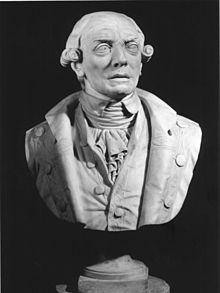Angelo Emo | |
|---|---|
 Bust of Emo by Pietro Zandomeneghi, 1862–1863 | |
| Born | 3 January 1731 Venice, Republic of Venice |
| Died | 1 March 1792 (aged 61) La Valletta, Hospitaller Malta |
| Buried | San Biagio, Venice (since 1817) |
| Allegiance | Republic of Venice |
| Service | Venetian navy |
| Years of service | 1752–1792 |
| Rank | Capitano Straordinario delle Navi, Provveditore Generale da Mar |
| Battles / wars | Venetian bombardments of the Beylik of Tunis |
Angelo Emo (3 January 1731 – 1 March 1792) was a Venetian noble, administrator, and admiral. He is notable for his reforms of the Venetian navy and his naval campaigns, being regarded as the last great admiral of the Venetian Republic.
The scion of a distinguished family, Emo received an excellent education, and began his naval career as a cadet in 1752. He was quickly recognized for his ability and given his first command of a ship of the line two years later. In 1758, he was sent to cover the return of a trade convoy from London at the head of a squadron of three ships. Adverse weather resulted in a near-shipwreck for his ships, which suffered heavy casualties. In this episode, Emo gave proof of his determination and seamanship, earning acclaim both abroad and at home. Returning to Venice in 1759, over the following years he alternated between naval commands and administrative appointments in Venice, in which he invariably pursued modernizing and reformist policies. As naval commander, he led the Venetian fleet in shows of force against the Barbary states, as well as shadowing the Russian fleet in the Russo-Turkish War of 1768–1774.
In 1775, he proposed naval reforms based on the practices of the British Royal Navy, but was not able to convert them into practice until 1782, when he was given control of the Arsenal of Venice: new techniques were introduced, training and pay were improved, and new warships were constructed. In 1784–1785 Emo led the Venetian fleet in a series of raids on the harbours of the Beylik of Tunis in retaliation for corsair attacks on Venetian-flagged shipping, but his requests for a landing to capture Tunis were rejected. He spent the last years of his life in anti-piracy patrols, and died after a brief illness on 1 March 1792. His body was returned to Venice, where he received a hero's funeral, and a funerary monument by the sculptor Antonio Canova was commissioned in his honour.